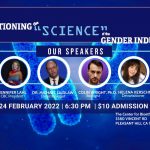Jennifer Lahl is National Director of the Center for Bioethics and Culture Network. William Hurlbut, Stanford University, is member of the President’s Council on Bioethics.
Lahl: Can you describe the basics behind Altered Nuclear Transfer (ANT)?
Hurlbut: ANT seeks a morally acceptable means of procuring pluripotent stem cells (the functional equivalent of embryonic stem cells) without the creation and destruction of human embryos. It would employ the basic technology of nuclear transfer, but with an alteration of the somatic cell nucleus or the egg before transfer to prevent the integrated unity that is essential for embryogenesis. An embryo is ‘totipotent,’ capable of forming an organism, but embryonic stem cells are pluripotent, capable of forming all the cell types but not in the organized and coordinate pattern of a living being. ANT is a broad concept and there may be many ways it can be used to accomplish the same ends. One recent proposal ANT-OAR (oocyte assisted reprogramming) would involve pushing along the pattern of gene expression so that what is created has the character of a pluripotent cell but not a totipotent cell. Such a creation would never have the actual configuration or potential that characterizes a human embryo and thereforewould not have the moral standing of a human being.
Lahl: How long have you been thinking about ANT and the need to pursue this research?
Hurlbut: I have been thinking about the meaning of human parts apart from their place within the living organismal whole ever since my medical training thirty years ago. I realized that eventually our technology would challenge us with these possibilities and we would need to think carefully to define clearly and precisely what our moral principles are trying to protect. More recently, over the past several years while serving on the President’s Council on Bioethics, I have been trying to find a way to solve our national conflict over this difficult issue. I am convinced that both sides are defending important human goods and that with constructive conversation and creative science we could find ways to obtain embryonic stem cells without the destruction of human embryos. This would secure our most fundamental moral principle while allowing social consensus for forward progress in biomedical science.
Lahl: What needs to happen to test your proposal and when might the science start to provide clinical benefits?
Hurlbut: Now that we’ve defined one morally acceptable means of accomplishing ANT, the laboratory studies need to be conducted. This will be done first in animal studies and then, if all goes well, cautiously extended to human cells. Some preliminary studies related to this are already underway and we should know fairly soon if the results are promising. With adequate funding and a little luck, it would not surprise me if we are able to provide embryonic stem cell lines that qualify for NIH funding within 12-24 months, and maybe sooner. What therapies will follow is a broader question, one that must be asked of all embryonic stem cell research, regardless of how the cells are obtained.
Lahl: Feminists have been objecting to the use of women and their eggs. Can you comment on their concerns?
Hurlbut: Recent studies suggest that nuclear transfer can be successfully accomplished with immature eggs. There are many immature eggs left over from IVF procedures and eggs might also be obtained from laboratory stimulation of ovarian tissues obtained during surgical removal of the ovaries for therapeutic reasons. Slices of ovarian tissue from mice have been cultured in vitro and yield a large number of eggs. This is proving more difficult with human ovarian tissue, but there are signs of progress. I oppose the idea of intentional superovulation to obtain eggs for experimentation; superovulation is medically risky and the long term effects on women are not well known. However, I do think there will eventually be abundant sources of eggs from morally acceptable sources.
Lahl: How has your proposal been received by the various voices in the embryonic stem cell debate, such as the science and religious communities and policy makers?
Hurlbut: The ANT proposal has created quite a bit of discussion and a range of reactions. Overall, the response has been very positive, with most people expressing interest and even gratitude that we are trying to find a way to resolve this difficult dispute. Some criticisms of the proposal have been based on misunderstanding and misrepresentation of what is being suggested.
Nonetheless, ANT does raise difficult questions about the use of our most basic biology. Certainly we must proceed with moral caution in these realms that are so close to the core of our central meaning as human beings. There is a certain ‘radiance of respect’ due to any human cells and tissues, but especially those of our procreative capacities. Nonetheless, for scientific projects with a serious purpose, we may proceed once we have drawn a clear line that defends human life at all stages of development. The recent proposal for ANT-OAR is receiving wide endorsement from scientists, moral philosophers, and religious authorities. I am hopeful that it will lead us to a genuine solution that can sustain the primacy of moral principle while opening positive prospects for biomedical science—that would be a triumph for our nation as a whole.
Lahl: OK, so your proposal sounds like such a win-win! What have been the objections of your critics, or what exactly are they misunderstanding?
Hurlbut: Some have raised the objection that we may be just creating a ‘disabled’ embryo. This is a serious consideration, but I believe the recent proposal for ANT-OAR has fully met these concerns. This method would turn on certain master genes that define ES cells but which are never on in a fertilized egg. By fast-forwarding to the gene expression pattern of a pluripotent cell we would bypass the embryo and go directly to a differentiated cell type. A human embryo has a developmental potential; it is that stage at which the whole produces the parts. Without the capacities to form the basic body axes and body plan, a growing thing is simply not an organism, but merely a trajectory of disorganized growth. There is a proof in nature that you can get embryonic stem cells without an embryo. Naturally occurring ovarian tumors called teratomas can produce all the primary embryonic cell types and even more advanced tissues and body parts, but no physician would consider a teratoma a living being. Embryonic stem cells, likewise, lack the capacity to form an organism (they produce teratomas when implanted into the human body), so they too are not embryos. To be a human embryo means to have a coherent unity and a developmental potential along the trajectory of the human form.
Lahl: What has been the reaction to your ANT solution from those who have no moral objection to the use of the human embryo?
Hurlbut: Some in the scientific community have labeled it a ‘distraction’ and a ‘deflection of resources.’ They believe the best science will come from unconstrained study of living embryos up to 14 days, but they generally cannot supply a satisfactory argument for not going further. Any approach that does not acknowledge the continuity of human life from fertilization to natural death will be continually persuaded fo
rward by further promise of medical benefit—why would we not want to study the full period of embryogenesis up to and beyond eight weeks? Nonetheless, most scientists I have spoken with recognize the moral concerns and have responded positively to the proposal, and some have already begun research investigating its possibilities.
Lahl: Do you have any final comments?
Hurlbut: I think this is a crucial moment in defining our national character. We are being drawn forward into embryonic stem cell research by a strange combination of positive promise and exaggerated fear. I am pleased that our nation is now acknowledging the many serious medical conditions that are worthy of research funding, but we are not at the threshold of banishing all the burdens of disease. Likewise, we must not give in to arguments that override moral considerations in favor of commercial considerations. Ultimately, science is grounded in moral principles that sustain social consensus; otherwise it loses its way. If we acknowledge the important human goods being defended by both sides of this difficult debate and seek a technological solution such as Altered Nuclear Transfer, we will be a stronger, nobler and more enduring civilization. download (pdf) the full interview.
Purchase the audio (3CDs) of the conference Prop.71 that includes a presentation by William Hurlbut. ($35.00) – paypal supported, includes shipping and handling.
Author Profile
Latest entries
 Sperm DonationMarch 15, 2022Venus Rising with Edward Saulig: Reflections of a Sperm Donor
Sperm DonationMarch 15, 2022Venus Rising with Edward Saulig: Reflections of a Sperm Donor BioethicsMarch 13, 2022Dr. C. Ben Mitchell: 2022 Ramsey Award Winner
BioethicsMarch 13, 2022Dr. C. Ben Mitchell: 2022 Ramsey Award Winner #BigFertilityMarch 10, 2022Documentary Explores One Woman’s Journey through Egg Donation
#BigFertilityMarch 10, 2022Documentary Explores One Woman’s Journey through Egg Donation BioethicsMarch 9, 2022Questioning the “Science” of the Gender Industry
BioethicsMarch 9, 2022Questioning the “Science” of the Gender Industry

